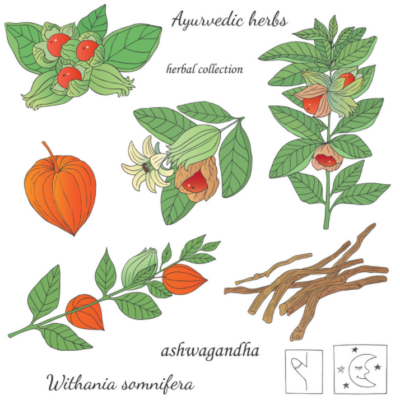Ashwagandha {Indian Ginseng}

About
Ashwaganda plant, Withania somnifera, is also known as Indian Ginseng, Ayurvedic Shrub and Withania. Highly esteemed as Indian medicinal plant. The dried root is used in the Ayurvedic system as a general, or strengthening, tonic. Primarily as a remedy for sexual exhaustion, weakened immune system and chronic fatigue syndrome. A Modern folk remedy for multiple sclerosis. Ashwaganda plant is native to Africa, the Mediterranean area, India and Asia and prefers light to medium well drained soils in a protected, sunny position. Will tolerate a light to medium frost. Grows to a height of 0.75m with a spread of 0.75m. A tropical evergreen shrub that becomes an annual in temperate regions.
Growing
For ashwagandha cultivation, plant seeds 2 cm deep and 10 cm apart when the temperature is around 20 C. Seeds will germinate in two weeks. Water the seedlings well while they are establishing. Thin out the weak plants after a month of growing, leaving the space around 50 – 60 cm between plants.
Harvest
Part – Root
Harvesting ashwagandha root requires a good digging fork, a lot of persistence, and a willingness to get your hands dirty (literally). Even after the root is finally dislodged from the earth, it still needs to be cut down into small pieces to be ready for processing, thoroughly washed, and dried for about ten days.
Use
Ashwagandha is popularly used for boosting immunity, anti-ageing, joint pain and insomnia. Due to its active ingredient called withanolides, Ashwagandha is also used as an “adaptogen” to help the body cope with daily stress, as a general tonic and for improving thinking ability
Precautions ~ Not to be used during pregnancy. If you have a medical condition or take pharmaceutical drugs please consult with your doctor before use.
